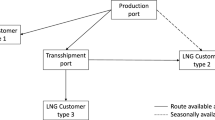Abstract
Airplane deicing is a safety measure to eliminate/prevent icing on airplanes that can lead to airflow disruption and emergency conditions. Aircraft deicing/anti-icing fluids (ADF) are high in glycol content. At Dallas Fort Worth International Airport (DFW), the major aircraft deicing activities are conducted at designated deicing pads called Source Isolation Deicing Sites, where ADF run-off can be captured and conveyed into the airport’s glycol collection system. A portion of ADF drips from the aircraft during taxiing and shears off the aircraft during take-off, entering nearby waterways without treatment. Glycol acts as a nutrient for bacteria in the airport’s receiving waterways, resulting in an increase in bacterial growth and a subsequent reduction in dissolved oxygen (DO), potentially endangering aquatic life. This paper proposes a prototype data-driven deicing activities management framework for DFW to address the complexity of airport deicing operations and its impacts. The proposed framework uses stochastic dynamic programming (SDP) to assign airplanes in each hour to deicing pad locations, so as to maximize DO in the receiving waters, subject to airport constraints. Some data were artificially generated using the available knowledge of airport operations. The state transition equations in SDP were estimated. The proposed framework was demonstrated using three cases during major deicing events. Improvements in DO compared with actual DO recorded in the data were mixed; however, the results motivated DFW to implement a new data collection process to replace the artificially-generated data, so that a more accurate optimization could be conducted in the future.


Similar content being viewed by others
References
Alexander, W. P., & Grimshaw, S. D. (1996). Treed regression. Journal of Computational and Graphical Statistics, 5(2), 156–175.
Cervellera, C., Chen, V. C. P., & Wen, A. (2006). Optimization of a large-scale water reservoir network by stochastic dynamic programming with efficient state space discretization. European Journal of Operational Research, 171, 1139–1151.
Chen, V. C. P. (1999). Application of orthogonal arrays and MARS to inventory forecasting stochastic dynamic programs. Computational Statistics and Data Analysis, 30, 317–341.
Chen, V. C. P., Ruppert, D., & Shoemaker, C. A. (1999). Applying experimental design and regression splines to high-dimensional continuous-state stochastic dynamic programming. Operations Research, 47, 38–53.
Corsi, S. R., Harwell, G. R., Geis, S. W., & Bergman, D. (2006). Impacts of aircraft deicer and anti-icer runoff on receiving waters from Dallas/Fort Worth International Airport, Texas, USA. Environmental Toxicology and Chemistry, 25(11), 2890–2900.
FAA Report (1996). Report on FAA Deicing Program at Guardia and O’Hare Airport. Report Number E5-FA-7-002, Office of Inspector General, Department of Transportation, Federal Aviation Regulation. (http://ntl.bts.gov/lib/1000/1500/1543/e5-fa-7-002.pdf)
Fan, H., Tarun, P. K., & Chen, V. C. P. (2013). Adaptive value function approximation for continuous-state stochastic dynamic programming. Computers & Operations Research, 40, 1076–1084.
Fan, H., Tarun, P. K., Shih, D. T., Kim, S. B., Chen, V. C. P., Rosenberger, J. M., et al. (2011). Data mining modeling on the environmental impact of airport deicing activities. Expert Systems with Applications, 38, 14899–14906.
Kim, H., Loh, W.-Y., Shih, Y.-S., & Chaudhuri, P. (2007). Visualizable and interpretable regression models with good prediction power. IIE Transactions, 39, 565–579.
Leist, D., Flowers, K., Bartley, G, Beebe, B., Giles, T., & Ratcliff, E. (1997). Impacts of deicing fluids on Elijahs and Gunpowder Creeks Boone County, Kentucky. Kentucky Department For Environmental Protection, Division of Water, Frankfort, Kentucky. (http://www.epa.gov/owow/tmdl/examples/organics/ky_elijahgunpowder.pdf).
Lin, C.-F., LeBoulluec, A. K., Zeng, L., Chen, V. C. P., & Gatchel, R. J. (2014). An adaptive pain management framework. Health Care Management Science, 17, 270–283.
Masters, G. M. (1997). Introduction to environmental engineering and science (2nd ed.). Upper Saddler River, NJ: Prentice Hall.
Price, K. V., Storn, R. M., & Lampinen, J. A. (2005). Differential evolution: A practical approach to global optimization. Berlin: Springer-Verlag.
Revitt, D. M., & Worrall, P. (2003). Low temperature biodegradation of airport de-icing fluids. Water Science and Technology, 48(9), 103–111.
Revitt, D. M., Worrall, P., & Brewer, D. (2001). The integration of constructed wetlands into a treatment system for airport runoff. Water Science and Technology, 44(10,11), 469–476.
Saaty, T. L. (1980). The analytic hierarchy process. New York: McGraw-Hill.
Switzenbaum, M. S., Veltman, S., Schoenberg, T., Durand, G. M., Mericas, D., & Wagoner, B. (1999). Workshop: Best management practices for airport deicing stormwater. Publication No. 173, Amherst Water Resources Research Center, University of Massachusetts, Massachusetts. (http://www.umass.edu/tei/wrrc/WRRC2004/pdf/Switz173.pdf).
Tsai, J. C. C., Chen, V. C. P., Chen, J., & Beck, M. B. (2004). Stochastic dynamic programming formulation for a wastewater treatment decision-making framework. Annals of Operations Research, Special Issue on Applied Optimization under Uncertainty, 132, 207–221.
U.S. Environmental Protection Agency (2000). Preliminary data summary airport deicing operation. EPA 821-R-00-001, Office of Water, Washington, DC.
Yang, Z., Chen, V. C. P., Chang, M. E., Murphy, T. E., & Tsai, J. C. C. (2007). Mining and modeling for a metropolitan Atlanta ozone pollution decision-making framework. IIE Transactions, Special Issue on Data Mining, 39, 607–615.
Yang, Z., Chen, V. C. P., Chang, M. E., Sattler, M. L., & Wen, A. (2009). A decision-making framework for ozone pollution control. Operations Research, 57(2), 484–498.
Acknowledgements
This research was supported by the Dallas Fort Worth International Airport and the National Science Foundation (ECCS-0801802). The authors would also like to acknowledge Ms. Kerry Stuewer for constructing and testing the Differential Evolution algorithm code.
Author information
Authors and Affiliations
Corresponding author
Rights and permissions
About this article
Cite this article
Fan, H., Tarun, P.K., Chen, V.C.P. et al. Data-driven optimization for Dallas Fort Worth International Airport deicing activities. Ann Oper Res 263, 361–384 (2018). https://doi.org/10.1007/s10479-017-2747-1
Published:
Issue Date:
DOI: https://doi.org/10.1007/s10479-017-2747-1




